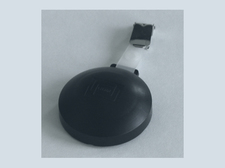-
Topics
subnavigation
Topics
Electromagnetic fields
- What are electromagnetic fields?
- Static and low-frequency fields
- Radiation protection relating to the expansion of the national grid
- High-frequency fields
- Radiation protection in mobile communication
Optical radiation
Ionising radiation
- What is ionising radiation?
- Radioactivity in the environment
- Applications in medicine
- Applications in daily life and in technology
- Effects
- What are the effects of radiation?
- Effects of selected radioactive materials
- Consequences of a radiation accident
- Cancer and leukaemia
- Genetic radiation effects
- Individual radiosensitivity
- Epidemiology of radiation-induced diseases
- Ionising radiation: positive effects?
- Risk estimation and assessment
- Radiation protection
- Nuclear accident management
- Service offers
-
The BfS
subnavigation
The BfS
- About us
- Science and research
- Laws and regulations
- BfS Topics in the Bundestag
- Links
Measurement methods
Measurements of radiation exposures from Radon-222 can be performed using either passive measurement devices or direct-reading devices:
- Passive measurement devices include radon diffusion chambers equipped with nuclear track detectors, providing readings proportional to the radiation imparted by radon during the period of measurement. These measurement devices are particularly suitable for long-term studies covering several months.
- Direct-reading devices should be used to measure the current radon concentration and to study its variation with time.
Communal area
Part of a building, consisting of one or more common rooms, that is neither a technical nor a traffic area and is not used for joint purposes.
Communal rooms in flats:
Living rooms and bedrooms, lounges and dining rooms.
Other communal rooms:
Office spaces, business premises, sales areas and workshops, restaurants, meeting rooms, classrooms and medical care facilities, gyms and and detention cells etc.
As a general rule, the annual mean of Radon-222 activity concentration is determined in order to assess the radiation exposure from Radon-222 indoors. It is vital for these measurements that the room in question is used in a way representative of its specific function over the period of measurement.
Measurements should be carried out over a period of one year if possible. Measurements performed over shorter periods of time are possible as an alternative, provided that the annual mean can be derived therefrom with sufficient certainty.
Measurement devices
The measurements of radiation exposures can be conducted using either
- electronic measurement devices (providing readout and/or storage of current data during measurement) or
- passive measurement devices (providing a value based on separate analysis of the detector by a measuring institution upon completion of the measurement).
The Federal Office for Radiation Protection (Bundesamt für Strahlenschutz, BfS) has made available a list of measurement institutions providing evaluation of passive measurement devices in Germany.
Measurement principle
The principle of measurement is identical for all types of equipment: as a general rule, radon reaches the sensitive measuring volume of the instrument where the radon and its short-lived progeny decay. The alpha radiation emitted is recorded by a suitable detector. When electronic devices are used, radon can also reach the measured volume as a result of flushing using a pump.
A typical passive measurement device is composed of a diffusion chamber that can be invaded by radon via the chamber walls or a filter. The diffusion chamber is set up at the measuring site and is subsequently transferred to an appropriate institution for analysis upon completion of the measurement.
Constructional designs
There are different designs of diffusion chambers (see picture on the right), which are used with different detector materials. The detectors are usually composed of little plastic slices of different chemical composition and sensitivity as to the alpha radiation of radon and its decay products.
The alpha particles produce material defects within these plastic slices which are visualised as tracks based on chemical-physical methods and can subsequently be counted. Based on the result, the mean Radon-222 activity concentration can be determined, considering the measurement time.
State of 2018.01.12



